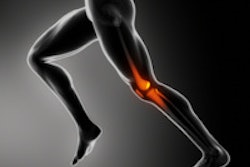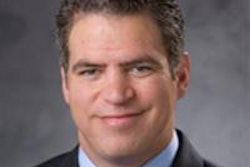
Knee MRI exams are more likely to be negative if ordered by physicians who have a financial interest in the imaging equipment being used, researchers concluded in a study published online September 17 in Radiology.
Studies have shown that the practice of self-referral is increasing, and that self-referral by nonradiologist physicians leads to higher overall imaging use -- and higher healthcare costs, according to the group.
"We believe that the inherent conflict of interest present when physicians both order and then perform and collect fees on the basis of the acquisition of MR imaging examinations is an important factor to consider whenever the matter of healthcare cost is raised," wrote lead author Dr. Matthew Lungren, from Duke University Medical Center, and colleagues.
Despite a growing body of literature indicating that self-referred imaging leads to inappropriate use or overutilization, this connection is still considered controversial -- due, in part, to a lack of reliable data on the financial arrangements of imaging equipment ownership and the details of the imaging diagnoses, Lungren and colleagues wrote.
 Dr. Matthew Lungren from Duke University.
Dr. Matthew Lungren from Duke University.For the current study, the researchers evaluated whether owning MRI equipment would affect the likelihood of positive findings at imaging of the knee. They also investigated whether the rates of abnormalities seen at MRI were different between physician groups with a financial interest in the equipment and those without a financial interest (Radiology, September 17, 2013).
Lungren's team reviewed 700 consecutive diagnostic knee exams from 667 patients. The exams had been interpreted by one radiology practice between January and April 2009 and referred by two separate orthopedic physician groups serving the same geographic community. The first group had a financial interest in the MRI equipment used, while the second group had no financial interest. There were no significant differences between the two orthopedic groups in terms of age, mean years of practice, or specialized/fellowship training.
For each group, the researchers analyzed the percentage of negative exams and the frequency of each type of abnormality found on positive exams. Among the 700 MRI exams (split evenly, at 350 per group), there was no significant difference in the number of abnormalities per positive scan between the two groups.
However, knee MRI exams ordered by the group with financial interest in the equipment were 33% more likely to be negative. Of 205 negative exams, 117 came from the group with financial interest in the MRI unit, compared with 88 for the group without a financial interest.
The discrepancy in negative exams between the two groups occurred despite otherwise similar pathology, demographics, and referring physician characteristics -- indicating there is a different threshold for ordering MR exams that is connected to financial incentive, Lungren and colleagues wrote. But the study doesn't prove that a lower threshold for ordering the test is intentional.
"Although our study does suggest a bias toward increased utilization of MR imaging of the knee by physicians who own MR imaging equipment, by itself it does not prove intended overutilization for profit," the authors noted. "Furthermore, it is also possible that the practice pattern of a given physician group may be particularly imaging-intensive, whereas that of a different group might be less so."
Self-referral has been shown to be a key driver of increasing medical costs, and the study demonstrates strong evidence of greater use of advanced imaging when physicians can financially benefit, according to Lungren's team.
"Our findings suggest the likelihood of overutilization of knee MR imaging among physicians who own MR imaging equipment and support including financial interest in imaging equipment in the consideration for cost-containment efforts by government and third-party payors," the group concluded.



















